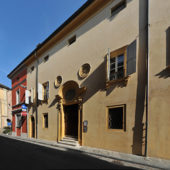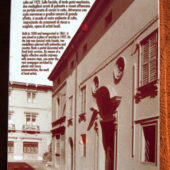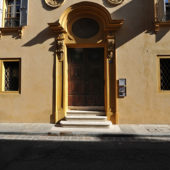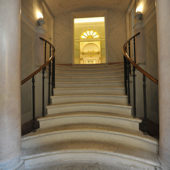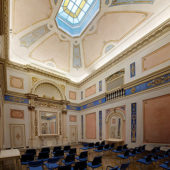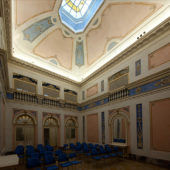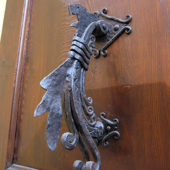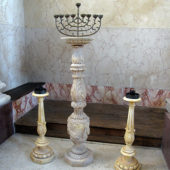Building began in 1858 and was completed in 1861. The synagogue was closed as a Jewish house of prayer in 1922.
People of the Jewish faith have lived in the area surrounding Carpi since 161 BCE, at the time the Maccabeans traveled to the area. This area, termed ‘Emilia-Romagna’ and Florence, were the two areas of Italy that boasted the largest Jewish communities at that time. Through the 13th century only a moderate number of Jews moved to Emilia-Romagna. However, during the 1400s, the Jewish population significantly increased, as a result of the Spanish expulsion.
The Christians of the Emilia-Romagna accepted the Jews, because of their banking experience. The church discouraged its members from lending money, leaving the banking profession solely to the Jews’ capable hands who were basically forced to be bankers because almost all other forms of employment were denied them.
Jewish printing houses sprung up in nearby cities such as Bologna. Interestingly, in 1482, a Bologna printing house printed the first copy of the Pentateuch. In the 16th century, Pope Paul IV passed a decree that all Jews had to live in ghettos. They were also required to abide by a curfew. They were forbidden to own land or the buildings in which they lived. The Jews of Emilia-Romagna were frequently persecuted and therefore, fearful of riots and purges of their neighborhoods. In the late 1800s the prohibitions on Jewish business were lifted and many Jews in the area left for the more populated and profitable regions of Milan, Rome and Turin.
During WWII, there was a train stop in Carpi on the line to Auschwitz – Birkenau. Many survivors recall the harrowing train journey and the stop at Fossoli di Carpi to pick up more terrified Jewish prisoners, who were herded like cattle into the already crowded cars.
In an effort to keep Judaism alive in Emilia-Romagna, in the 1980s, the Bologna Jewish community and other small regional Jewish communities began to restore abandoned synagogues and buildings. In particular, one Jewish art show contributed to a high concentration of Jewish tourists visiting the area in the early 1990s. The collection comprised historical Jewish objects such as talith and rimonim. The exhibition traveled around both the Emilia-Romagna region and the United States. Although several historic Jewish sites have been successfully restored, these synagogues are primarily used as tourist destinations rather than houses of worship. Today, there are only about 400 Jews living in the entire Emilia-Romagna region.
The Carpi Synagogue was built in 1858, in the neoclassical style, popular at that time. The attractive, two-storey building has a peach façade featuring darker peach molding around the door, windows and ornamental round moldings above the entryway. The windows upstairs are adorned with wrought iron railing and white shutters, whilst the downstairs windows boast diamond-shaped leaded glass. Inside, the entranceway to the prayer room features a row of sweeping white marble steps with wrought iron balusters and lacquered wood handrails, flanked by white marble columns. A glowing light emanates from the rooms beyond. Inside the prayer room, its walls painted faux marble, ivory with rose and blue insets, features neoclassical molding and gilding. The ceiling is a huge cupola, similarly decorated as the walls, with the center of the ceiling graced by a stained glass window of blue, clear and yellow.
Since the building is not currently used as a synagogue a mirror is put in place of the Aron Kodesh itself. There is no platform or tivah. The Aron Kodesh would sit inside the neoclassical molding at the front of the room which has double ivory columns sporting gilded Corinthian capitals with intricately decorated and gilded crossbar, supporting splayed “shell” shaped molding underneath the decorated and gilded arch. This synagogue was closed as a Jewish house of prayer in 1922. Today, the building is used for lectures, performances and as an exhibition space.

